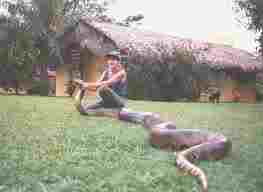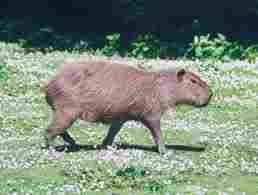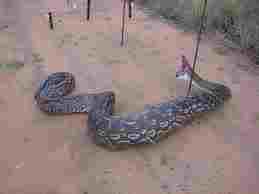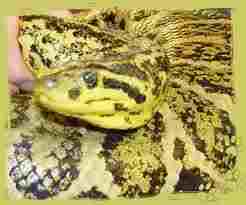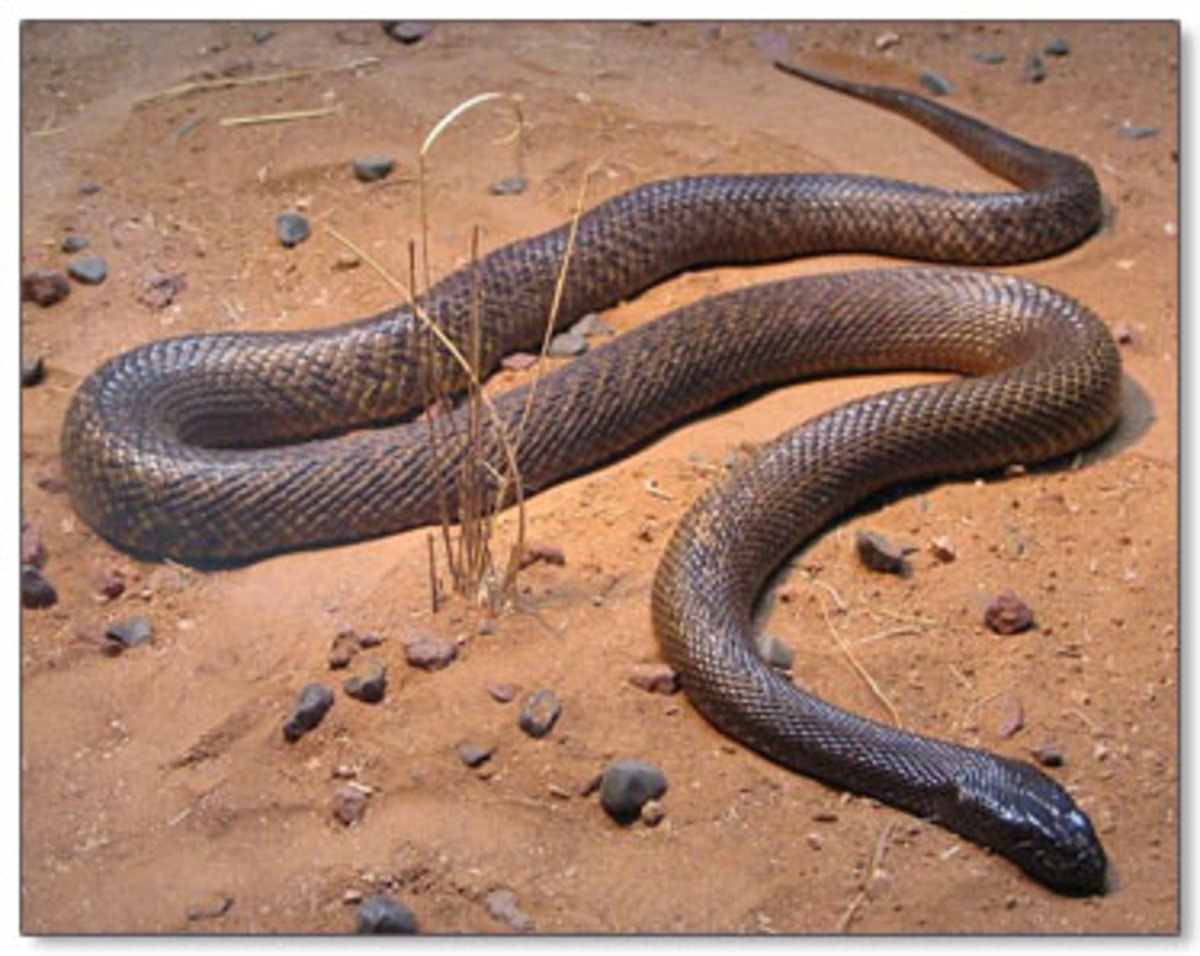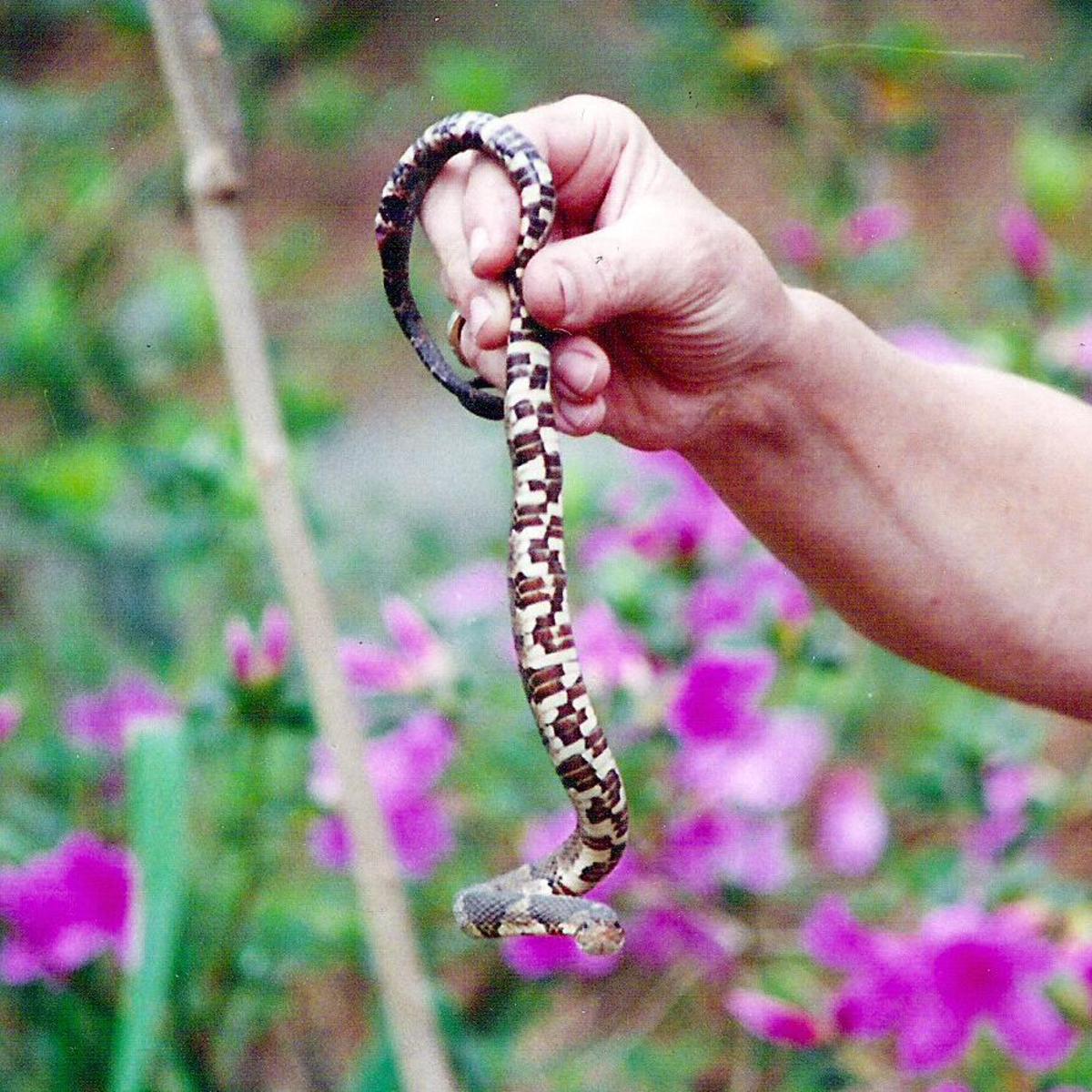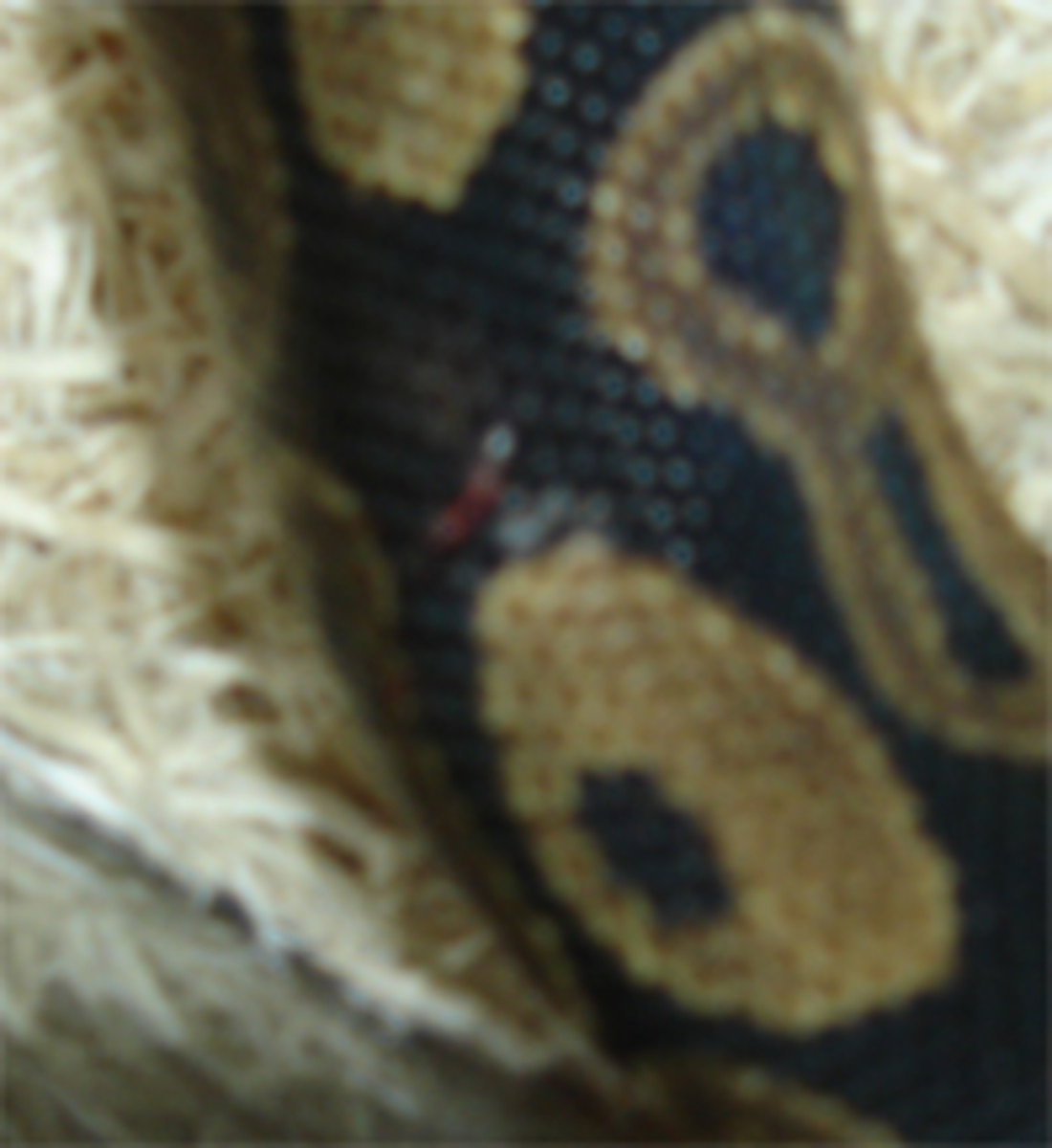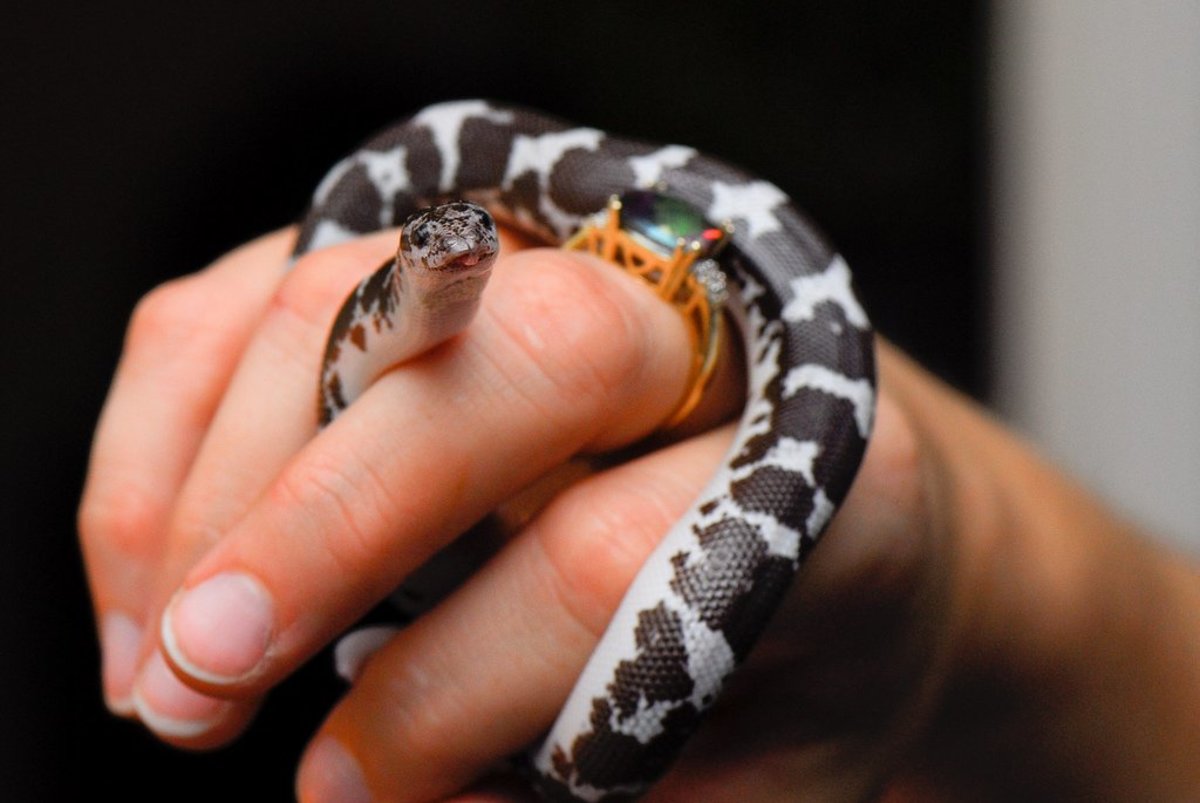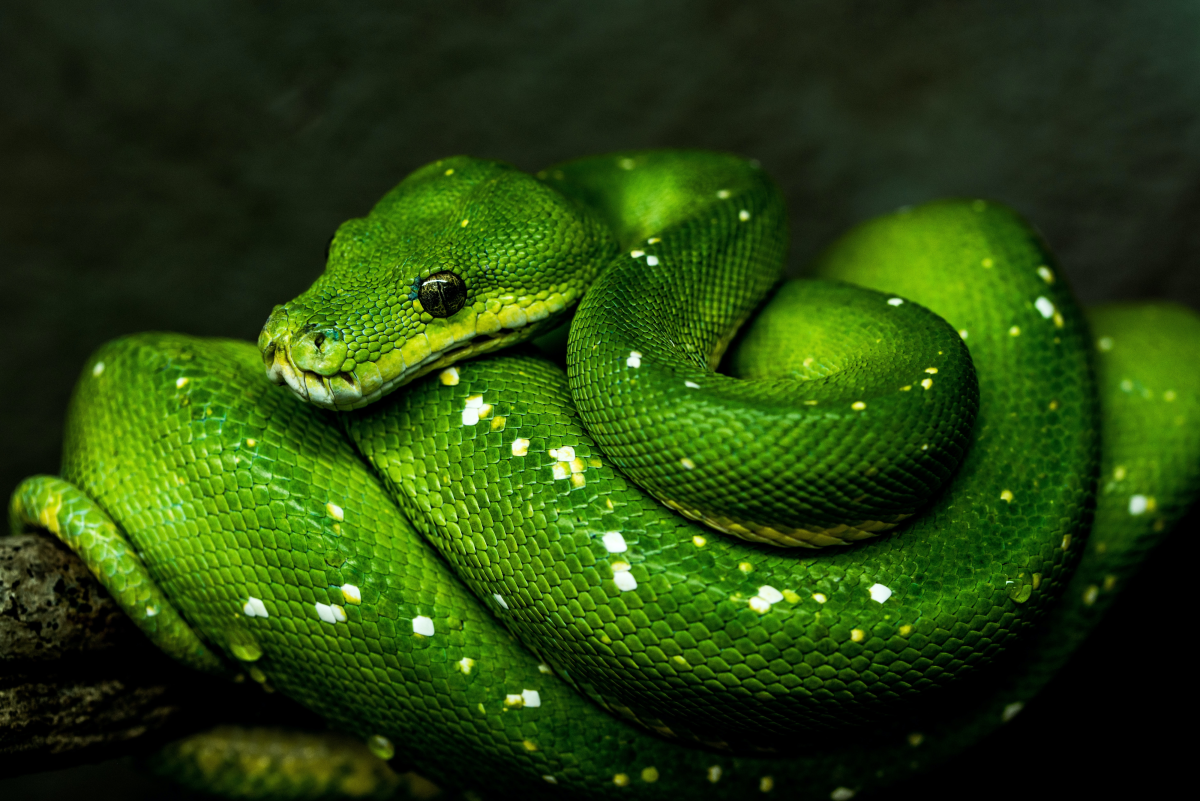The Green Anaconda: World's Heaviest Snake.
Anacondas have lovely coloration
Click thumbnail to view full-size




Anacondas Just Want to be Left Alone!
Anaconda!
Thanks in the main to Hollywood (again), which has portrayed the poor Anaconda as ten times its size and weight in several asinine films; given it attributes of personality far better suited to the stars and directors of the movies (cunning, violence, sexual predation, etc). and damning the rather shy serpent as being consumed with thoughts of hunting man and having him for dinner.
All total crap, of course. Anacondas do not see man as prey; do not hunt them -in fact, I can’t find one documented account of an Anaconda killing and eating a human. Despite that, I am sure there has been the odd occasion when Homo sapiens in the Amazon has fallen victim to the genus “Eunectes Murinus,” (In Greek, “The good swimmer who eats mice!”). Although Anacondas do not target us, and are probably soundly afraid of man after our victimization of them, they are predators of opportunity, and a hungry Anaconda would, I’m sure, snatch a child in deep water if it was hungry. But few and not often.
A large specimen is certainly capable of subduing and eating a man. They regularly kill and eat caimans, deer, tapirs and capybara, although their normal fare would be slightly easier to catch and subdue: small mammals and reptiles, large wading birds and fish. There have been a couple of serious reports of an anaconda killing and eating a mature jaguar: that would be some feat…more likely is the jaguar killing and eating the snake. The truth being mostly is that they would stay away from one another. Predators in the wild are very careful to stay away from serious injury which would lead to predation and infection; there is little chance of an Anaconda subduing a fit, mature jaguar without being severely bitten and clawed by the powerful cat, (Unless it came upon the cat swimming in deep water...that would be another story).
Like all constrictors, such as Boas and Pythons, they first grasp prey with a powerful bite and then quickly throw coils of their muscular body over the trunk and suffocate by stopping the victim from breathing. The Asian Reticulated Python is actually longer than the Anaconda, but the South American snake is heavier in the body.
There are three species of Anaconda. The largest and heaviest, the creature of legend and celluloid, is the beautiful Green Anaconda. He is olive green with patches of black all down the body; yellow to orange stripes on the narrow head. Despite the rumours of snakes 60 to 120 feet in length, the largest captured and verified was 521cm. In length (18 feet 1 inch) and weighed just 214 pounds.
The other two species are the Yellow and the Dark Spotted Anacondas, both considerably smaller and more rare.
It might be worth noting that the World Conservation Society has offered a reward for many years for anyone catching any snake over 30 feet in total length - verified by them. The reward currently stands at $50,000, so is not to be sneezed-at. So far, no takers - not even close.
Anacondas spend most of their life in, or close to water. As ambush predators sometimes - like crocs - they lie just under the surface with their high placed eyes and nostrils just breaking the surface. Rather sluggish on land, they change into fast and streamlined swimmers in the water. There may be a case that much larger reptiles could be found in the deep Amazon and Orinoco rainforests where larger prey is also present.
The female is substantially larger than the male allowing her dominance where choosing a mate is concerned. Occasionally, a number of snakes consisting of one female and several males can be found intertwined as the males seek to become top dog and have the female press her sexual organs next to theirs, (rather like male members of POF!).. They usually mate, one-on-one, in the water, however and the situation has been little observed.
Once impregnated, the gestation is 6 to 7 months. Anacondas are ovoviparous, that is, they give birth to live young. Unlike venomous snakes, the young are little able to defend themselves and most are killed by other predators.
Anacondas are not easy to keep in captivity and do not make good pets. I always advise against keeping any large reticulating snake in captivity. They NEVER see you as their friend; at best, they see you as a warm fuzzy object that brings prey to them. People still insist on keeping reticulated pythons and these large reptiles still insist on occasionally eating them or their pets. In the case of the Anaconda, they are extremely aggressive and “Ectothermal,” as are all snakes to a lesser of greater extent. This means you will have to keep an eagle eye on their core temperature and the temperature of their water and pen. I wouldn’t have a large Anaconda in the house for any reason on Earth (except perhaps unless the choice was between the snake, Peter Mandleson, or Rosalind Franklin from Diggory Press!).
Now all the Anaconda lovers will mail me and tell me to “Leave their darlings alone!” (With pleasure!).

